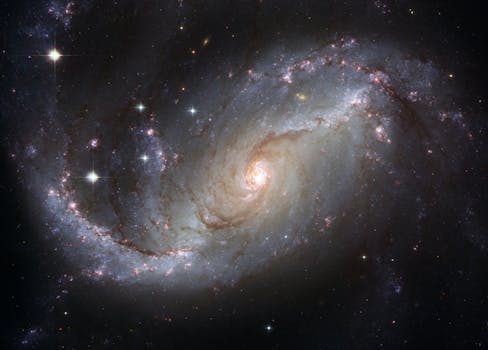
“
Beyond the Milky Way: Imagining New Worlds and Possibilities
Introduction to Space Exploration
Beyond the Milky Way: Imagining New Worlds and Possibilities is a fascinating topic that has captivated human imagination for centuries. The possibility of life beyond our galaxy has sparked intense curiosity and debate among scientists, philosophers, and the general public. As we continue to explore and understand the vastness of the universe, we are forced to confront the limits of our current knowledge and the endless possibilities that lie beyond.
The Milky Way galaxy, which is our home, is just one of the billions of galaxies that exist in the observable universe. With an estimated 100-400 billion stars, the Milky Way is a massive spiral galaxy that is thought to have formed around 13.6 billion years ago. However, the universe is vast, and there are many other galaxies and star systems that are yet to be discovered and explored.
Exploring New Worlds and Galaxies
As we venture beyond the Milky Way, we enter a realm of unknown possibilities and discoveries. The search for exoplanets, which are planets that orbit stars outside of our solar system, has become a major area of research in recent years. With the help of advanced telescopes and space missions, scientists have discovered thousands of exoplanets, some of which are believed to be located in the habitable zones of their respective stars.
The discovery of exoplanets has raised hopes of finding life beyond Earth and has sparked a new wave of interest in space exploration. The possibility of finding intelligent life, in particular, has captured the imagination of the public and has inspired numerous science fiction stories and films. However, the search for life beyond Earth is a complex and challenging task that requires careful planning, precise instrumentation, and a deep understanding of the conditions necessary for life to exist.
Potential for Life and Discovery
The potential for life and discovery beyond the Milky Way is vast and varied. With an estimated 100 billion galaxies in the observable universe, the possibilities for life-supporting planets and star systems are endless. The discovery of dark matter and dark energy, which are thought to make up around 95% of the universe, has also raised new questions about the nature of the universe and the potential for life to exist in unexpected places. For more on this topic, check out The Infinite Universe of Imagination.
As we continue to explore and understand the universe, we are forced to confront the limits of our current knowledge and the endless possibilities that lie beyond. The search for life beyond Earth is a complex and challenging task that requires careful planning, precise instrumentation, and a deep understanding of the conditions necessary for life to exist. However, the potential rewards of such a discovery are immense and could revolutionize our understanding of the universe and our place within it.
Takeaways
- The possibility of life beyond the Milky Way galaxy has sparked intense curiosity and debate among scientists, philosophers, and the general public.
- The search for exoplanets has become a major area of research in recent years, with thousands of exoplanets discovered so far.
- The discovery of dark matter and dark energy has raised new questions about the nature of the universe and the potential for life to exist in unexpected places.
- The potential for life and discovery beyond the Milky Way is vast and varied, with an estimated 100 billion galaxies in the observable universe.
See more:
https://www.nasa.gov/
https://www.esa.int/
https://www.space.com/




